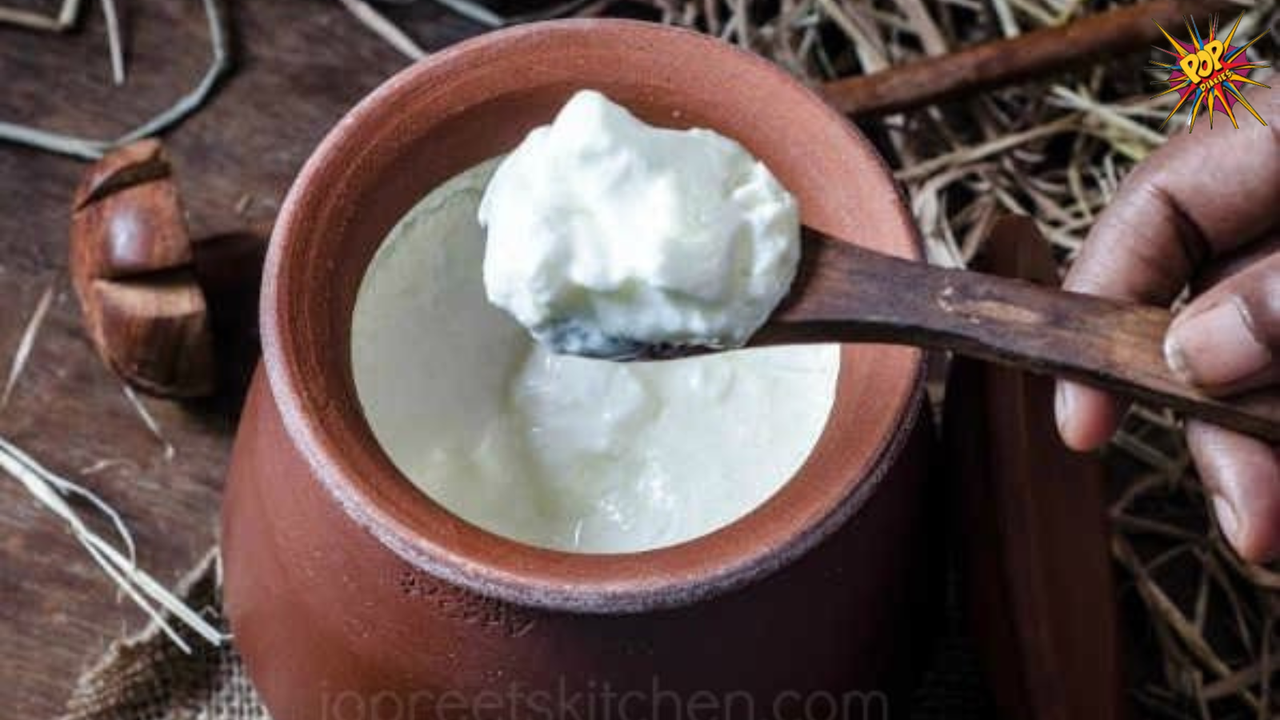Ayurvedic wellness is increasingly becoming the preferred choice for individuals seeking natural, holistic solutions that support long-term health. In...
Vous n'êtes pas connecté
- English
- Français
- عربي
- Español
- Deutsch
- Português
- русский язык
- Català
- Italiano
- Nederlands, Vlaams
- Norsk
- فارسی
- বাংলা
- اردو
- Azərbaycan dili
- Bahasa Indonesia
- Հայերեն
- Ελληνικά
- Bosanski jezik
- українська мова
- Íslenska
- Türkmen, Түркмен
- Türkçe
- Shqip
- Eesti keel
- magyar
- Қазақ тілі
- Kalaallisut ; kalaallit oqaasii
- Lietuvių kalba
- Latviešu valoda
- македонски јазик
- Монгол
- Bahasa Melayu ; بهاس ملايو
- ဗမာစာ
- Slovenščina
- тоҷикӣ ; toğikī ; تاجیکی
- ไทย
- O'zbek ; Ўзбек ; أۇزبېك
- Tiếng Việt
- ភាសាខ្មែរ
- རྫོང་ཁ
- Soomaaliga ; af Soomaali
 Maroc - POPDIARIES.COM - A La Une - 27/08/2024 13:04
Maroc - POPDIARIES.COM - A La Une - 27/08/2024 13:04
Ayurvedic Analysis: Why Curd is Considered Hot in Nature
In Ayurveda, the traditional system of medicine originating from India, foods are classified not only by their nutritional content but also by their effects on the body's internal balance and its energetic qualities. Curd, or yogurt, is a staple in many diets and is known for its cooling properties in many cultures. However, Ayurvedic principles present a more nuanced view, describing curd as having a "hot" nature. This classification might seem counterintuitive at first, especially when considering curd's common association with cooling and soothing effects. To understand this perspective, it's important to delve into Ayurvedic concepts and how they relate to curd. Ayurveda categorizes foods and substances by their effects on the three doshas—Vata, Pitta, and Kapha—which are the fundamental energies or biological principles that govern physiological and psychological functions in the body. Curd is particularly noted for its impact on the Pitta dosha, which is associated with the qualities of heat, metabolism, and transformation. In Ayurveda, foods that aggravate or balance Pitta dosha are seen as having a warming effect on the body, and curd, despite its tangy taste and cooling texture, is known to have qualities that can increase Pitta when consumed in excess. The "hot" nature of curd in Ayurveda can be attributed to its fermentation process and its impact on digestion. During fermentation, beneficial bacteria break down the lactose in milk, producing lactic acid and other compounds. This process not only makes curd easier to digest but also alters its energetic properties. The resulting curd has a sour taste, which Ayurveda considers a heating property. Foods with a sour taste are often associated with stimulating digestive fire (Agni) and increasing the Pitta dosha. Thus, while curd may have a cooling effect on the stomach and intestines, it is believed to increase internal heat and digestive fire in a broader sense. Moreover, Ayurveda emphasizes the importance of balance and the individual constitution of each person. For individuals with a predominant Pitta constitution or those experiencing Pitta imbalances, consuming curd in large quantities might exacerbate conditions like acidity, inflammation, or heat-related disorders. Therefore, while curd can be beneficial in moderation and for balancing other doshas, its overall energetic impact is considered warming due to its influence on the digestive system and its effect on Pitta. Additionally, the effect of curd on the body's thermal balance is also tied to its qualities of heaviness and richness. Ayurvedic texts describe curd as having a dense and somewhat oily nature, which can contribute to an internal sense of warmth and heaviness. This can be especially significant when curd is consumed in large amounts or combined with other heating foods. The overall effect of curd on the body, therefore, reflects its dual nature—providing cooling relief in the digestive tract while potentially increasing internal heat. In summary, Ayurveda’s characterization of curd as having a "hot" nature reflects a complex understanding of its effects on the body’s internal balance. While curd offers cooling benefits locally within the digestive system, its fermentation process, sour taste, and impact on the Pitta dosha contribute to its classification as a heating food. This nuanced view underscores the importance of considering individual constitution and balance when evaluating the effects of dietary substances in Ayurveda. READ MORE - Exploring the Vibrant Artistry of Goan Dance
Articles similaires
Never pair these foods with tea: Common combinations to avoid for better health
Enjoying tea involves more than just brewing; food pairings significantly impact its taste and nutritional value. Certain foods can clash, masking...
Never pair these foods with tea: Common combinations to avoid for better health
Enjoying tea involves more than just brewing; food pairings significantly impact its taste and nutritional value. Certain foods can clash, masking...
Natural Healing at lifestyleayurvedic – Ayurvedic Clinic in Sharjah
Looking for natural and holistic healing? Visit lifestyleayurvedic, the most trusted Ayurvedic clinic in Sharjah, offering authentic treatments based...
Natural Healing at lifestyleayurvedic – Ayurvedic Clinic in Sharjah
Looking for natural and holistic healing? Visit lifestyleayurvedic, the most trusted Ayurvedic clinic in Sharjah, offering authentic treatments based...
Anantara Kihavah Maldives Villas introduces season of holistic healing
Anantara Kihavah Maldives Villas is elevating its wellness offering this season with the arrival of three acclaimed practitioners, each bringing...
Anantara Kihavah Maldives Villas introduces season of holistic healing
Anantara Kihavah Maldives Villas is elevating its wellness offering this season with the arrival of three acclaimed practitioners, each bringing...
Family-Friendly Ayurvedic Clinic in Sharjah
Looking for a trusted Ayurvedic clinic in Sharjah? Visit LifestyleAyurvedic, the leading destination for authentic Ayurvedic treatments that restore...
Family-Friendly Ayurvedic Clinic in Sharjah
Looking for a trusted Ayurvedic clinic in Sharjah? Visit LifestyleAyurvedic, the leading destination for authentic Ayurvedic treatments that restore...
Pooping less than 3 times a week? Here’s why your gut is getting 'lazy'
A sluggish intestine, often stemming from modern diets and sedentary lifestyles, signals more than just constipation. Dr. Anshuman Kaushal highlights...
Les derniers communiqués
-
Lupin Unveils Strategic Partnership Program to Expand Reach of its Long-Acting Injectable Platform
Lupin Limited - 09/10/2025
-
BarrierBreak Recognized in 2025 Gartner® Market Guide for Digital Accessibility
BarrierBreak - 12/08/2025
-
Infinite Uptime Unlocks Production Reliability for Heavy Industries with PlantOS™ at Global Steel Dynamics Forum
Infinite Uptime - 18/06/2025
-
Majra – National CSR Fund Honours Top 20 CSR Projects At Inaugural Sustainable Impact Challenge 2025
National CSR Fund - 05/06/2025
-
Coal Imports During FY 2024-25 Drops by 7.9 % Compared to FY 2023-24
Ministry of Coal - 27/05/2025
-
India Records USD 81.04 Billion FDI Inflow in FY 2024–25
Ministry of Commerce and Industry - 27/05/2025
-
Government Restores RoDTEP Benefits for AA, SEZ, and EOU Exports
Ministry of Commerce and Industry - 27/05/2025
-
Aatmanirbhar Bharat: Raksha Mantri approves Advanced Medium Combat Aircraft Programme Execution Model through industry partnership
Ministry of Defence - 27/05/2025
-
Happiest Health Launches Happiest Physio Clinic in Koramangala, Bengaluru
Happiest Health Systems Private Limited - 26/05/2025
-
Shieldworkz Expands OT Cybersecurity Offerings to Tackle Emerging Threats and Posture Management Needs
Shieldworkz - 23/05/2025


